CLASSICAL
 Josquin Des Prez
Josquin Des Prez
The Golden Renaissance
Stile Antico
Decca
485 1340
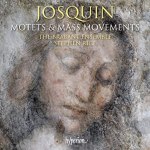 Josquin Des Prez
Josquin Des Prez
Motets and Mass Movements
Brabant Ensemble / Stephen Rice
Hyperion (dist. PIAS)
CDA68321
Since 2021 marks the 500th anniversary of his death, we can look forward with keen anticipation to lots of Josquin recordings this year. One of the greatest of the Franco-Flemish polyphonic masters, Josquin is responsible for some of the most lusciously beautiful sacred music ever written, and it’s both pleasing and unsurprising that two of the first celebratory releases of the year come from two of the most lusciously beautiful choral ensembles currently dedicated to this repertoire. Long a mainstay of the Harmonia Mundi label, the Stile Antico ensemble makes its Decca debut with a brilliant program centered on Josquin’s Missa Pange lingua, one of the truly great parody Masses of the Renaissance period and a relatively familiar work, but it also includes the world-premiere recording of Josquin’s chanson “Vivrai je tousjours.” As always, Stile Antico’s purity of tone and creaminess of blend set an industry standard. The equally fine Brabant Ensemble weigh in with a selection of motets and Mass sections for their release, focusing on shorter works, some of which may be of slightly questionable provenance but are still closely associated with Josquin (some include additions by later composers). The Brabants offer not only their usual sumptuous choral sound, but also a program that is of greater than usual historical interest. Both discs are very highly recommended.
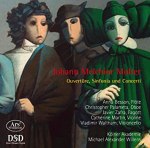 Johann Melchior Molter
Johann Melchior Molter
Ouvertüre, Sinfonia und Concerti
Kölner Akademie / Michael Alexander Willens
Ars Produktion (dit. Naxos)
ARS38252
Molter’s name isn’t well known today, but he had an illustrious (though peripatetic) career in 18th-century Germany, mainly in the courts at Eisenach and Karlsruhe. He left behind a rich catalog of instrumental compositions, but relatively few of his vocal works survive in known editions. Here the Kölner Akademie present a lovely selection of his concertos for oboe, cello, bassoon, flute, and violin, bracketed by a sinfonia and an overture. The soloists gathered for this recording are an impressive bunch, including the world-class oboist Christopher Palameta and the illustrious violinist Catherine Martin. I’m very impressed with both the playing and the production quality on this album, and it offers an excellent opportunity to add some fine work by a little-known composer to the library collection.
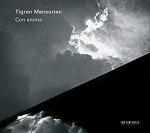 Tigran Mansurian
Tigran Mansurian
Con anima
Kim Kashkashian, Movses Pogossian et al.
ECM
In honor of Armenian composer Tigran Mansurian’s 80th birthday, violinist Movses Pogossian and violist Kim Kashkashian organized this recording of some of his more recent chamber pieces. Mansurian’s work draws deeply on elements of Armenian culture; not necessarily folk music (though Die Tänzerin is based on a traditional dance), but certainly sacred music and the deeply complex emotional history of his country. These pieces, written for varying combinations of violin, viola, clarinet, and piano, plus a string quartet, convey an overarching mood of sadness, but not depression; even at its quietest the music is intense, and even at its most intense it seems introspective, but there is always light pulsing around the edges of its darkness. This is a remarkably lovely album and is highly recommended to all libraries.
JAZZ
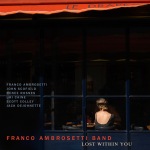 Franco Ambrosetti Band
Franco Ambrosetti Band
Lost within You
Unit
UTR 4970
This is really something of an all-star lineup led by trumpeter Franco Ambrosetti; the group also includes guitarist John Scofield, the killer rhythm section of bassist Scott Colley and drummer Jack DeJohnnette (who plays lovely piano on the opening track), and pianists Uri Caine and Renée Rosnes. The program is all ballads and mostly standards, with a couple of Ambrosetti originals thrown in, but even classic tunes like “Flamenco Sketches” McCoy Tyner’s lovely “You Taught My Heart to Sing” sound as if they could have been written by him. Ambrosetti’s tone is like weathered but burnished brass, and his colleagues create lovingly crafted settings for his solos and for the tunes themselves. Everything here is lovely, and though “Body and Soul” feels to me like it’s kind of lurching in a weirdly burlesque way, it’s the closest thing to a misstep on this remarkable album.
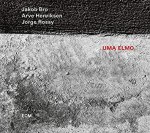 Jakob Bro
Jakob Bro
Uma Elmo
ECM
2702
Guitarist and composer Jakob Bro put together an intriguingly unusual trio for his fifth ECM album as a leader. Working with trumpeter Arve Henriksen and drummer Jorge Rossy, he creates the kind of atmospheric and reverberant sound that any longstanding fan of the “ECM jazz” genre would expect, with lots of space between notes–however, his compositions are so warmly personal and his melodies so carefully written that the music never feels abstract. Henriksen’s trumpet sometimes sounds more like a flute, and Rossy’s drumming is more about punctuation than beat, and Bro is often playing so quietly and subtly in the background that you don’t notice what he’s doing at first; what he’s doing, often, is creating quiet backdrops using echo, delay, and looping while he lets Henriksen take the melodic lead. The music is mysterious and utterly beautiful.
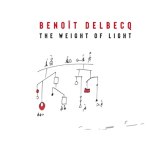 Benoît Delbecq
Benoît Delbecq
The Weight of Light
Pyroclastic
PR 13
Pianist and composer Benoît Delbecq has been working with prepared piano for years, and the pieces on The Weight of Light find him working in a sort of blended style: often playing gently percussive left-hand ostinatos using keys that actuate strings dampened or altered by the insertion of objects into the piano’s strings, while his right hand explores and creates more conventional melodies above. In some cases the technique alone is deeply impressive–consider the difficulty presented by the left-hand passages on “Family Trees,” for example–and in others the depth is more conceptual than technical: Delbecq was inspired, while writing these pieces, by his physicist brother’s studies of the mass properties of light. This is a release that could easily have gone in either the Classical or the Jazz sections, but I settled on Jazz because when Delbecq plays melodic lines they are generally more jazz-informed than classical (lots of blue notes, lots of vernacular chromaticisms) but also because his use of percussive piano preparations is deeply influenced by the playing of jazz drummers like Paul Motian and Ed Blackwell. This is a strange and wonderful album, recommended to all jazz and (yes) classical collections.
 Fred Frith & Ikue Mori
Fred Frith & Ikue Mori
A Mountain Doesn’t Know It’s Tall
Intakt (dist. Naxos)
INT352
Not all noise music is the same (believe it or not). Sure, some of it is deliberately assaultive–think Merzbow or This Heat. But some of it is subtle, complex, and even gentle, even when it’s sonically challenging. That’s how I’d characterize this marvelous album by legendary avant-guitarist Fred Frith and laptop sound artist Ikue Mori (whom Downtown denizens of a certain age may remember as the drummer for No Wave pioneers DNA). Frith plucks, scrapes, bows, thwacks, and bends his guitar strings, creating otherworldly sounds, and Mori distorts them until they sound like they come from another galaxy. To be completely clear, this music is not for everyone; but boy, it sure is for some of us. For all adventurous library collections.
FOLK/COUNTRY
 Vivian Leva & Riley Calcagno
Vivian Leva & Riley Calcagno
Vivian Leva & Riley Calcagno
Free Dirt
DIRT-CD-0100
Vivian Leva’s second album is a duo affair that features her partner Riley Carcagno. These songs were written mostly while the couple was separated, attending different universities, and you can hear the longing and wistfulness in both the lyrics and the music itself, which is mostly pretty quiet but frequently intense. Stylistically, it straddles that magic line that separates folk from country and tends to get one’s music labeled “Americana”: we’re talking primarily acoustic instruments, occasional steel guitar, tasteful drums, etc., but occasional drifts into full-on honky tonk territory (e.g. the classic weeper “My Teardrops Say”). The centerpiece of this duo’s sound is Vivian Leva’s clear-as-springwater voice (and her deeply personal lyrics), though Riley Calcagno’s harmony vocals are fundamental as well, and when he steps forward to take lead on a song you kind of wish he’d do it more often. Very, very nice.
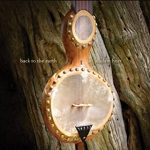 Adam Hurt
Adam Hurt
Back to the Earth
Ubiquitone
006
For his latest album, clawhammer banjo player Adam Hurt delivers a follow-up to his 2010 release Earth Tones, a celebration of the gourd banjo. The resonating surface of a modern banjo is a skin or mylar sheet stretched over a shallow drum, usually constructed of wood, but the precursor to that design is a gourd with one side sliced off (creating a resonating chamber) and a skin stretched over the resulting space. Add a fretless neck and you have a reasonable facsimile of the earliest 18th-century banjos, instruments with clear antecedents in Africa. The sound of a gourd banjo is, unsurprisingly, quite a bit mellower and less twangy than that of a modern banjo, and Hurt demonstrates its unique tone both tastefully and virtuosically on this collection of traditional tunes, which also features contributions from such illustrious helpers as Jordan Tice, Marshall Wilborn, and Ricky Skaggs.
 Various Artists
Various Artists
The Next Waltz Volume 3 (vinyl and digital only)
The Next Waltz
TNW-005
The third installment of collected singles from Bruce Robison’s The Next Waltz label is a lovely (if brief) collection of great modern country and country-rock songs with a strong Texas flavor to them. Featured artists include Jack Ingram, Cody Canada, the Panhandlers, and Robison himself, alongside his better-known half: the great singer-songwriter Kelly Willis. This crew prides itself on recording the old-fashioned way: all analog, 16 tracks to two-inch tape. Maybe that’s why Dan Dyer’s “Maiden’s Prayer” sounds like a Bob Wills recording from the 1940s–and why Robison and Willis sound like they’re waltzing all alone after hours in a cowboy bar on “Tennessee Blues.” And while Shinyribs’ version of… er… “Bitch Better Have My Money” might not have been the wisest choice for a cover, everything else here is a joy. (The label sent me a CD, but their website only offers download and vinyl versions.)
ROCK/POP
 Jane Weaver
Jane Weaver
Flock
Fire (dist. Redeye)
FIRE544
One good way to capture my attention is to introduce an album by saying it was “produced on a diet of Lebanese torch songs, 1980s Russian aerobic records, and Australian punk.” To be honest, I don’t hear much of any of those influences on Jane Weaver’s latest, but it does in fact seem to represent a much poppier direction for this singer and songwriter. From the Talking Heads funk of “The Revolution of Super Visions” to the glitchy highlife dream-pop of “Sunset Dreams” to the quirky Casiotone beats on “All the Things You Do,” Weaver brings a brightly colored sound palette and a highly individual style, and her take on modern pop music is simultaneously challenging and inviting. Highly recommended to all library collections.
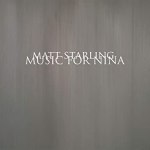 Matt Starling
Matt Starling
Music for Nina
Heart Dance
HDR20066
The idea of “generative music” (also known as “process music”) is that the composer creates a system, which creates the music according to a set of predetermined rules. Those rules may create more or less the same music each time, or they may include aleatory elements that ensure a different musical outcome with each instantiation of the process. Composer Matt Starling (founder of the Salt Lake Electric Ensemble) created the motivic loops and the generative process that comprise Music for Nina in response to the experience of new love, and you can hear that tenderness and joy clearly as it’s manifest in both the composite parts of this piece and in the interactions between them; imagine something like Brian Eno’s Discreet Music, but denser, richer, and much more characterized by real human emotion. Starling expresses his hope that “this music born out of love might ease anxiety, aid in sleep, support meditation and generally assist those who are seeking inner peace,” but the fact is that it also offers a truly lovely attentive listening experience.
 Cabaret Voltaire
Cabaret Voltaire
Shadow of Fear
Mute
1009-2
 Cabaret Voltaire
Cabaret Voltaire
Shadow of Funk
Mute
12MUTE622
Cabaret Voltaire have been around forever–sort of. They got their start in 1973 and recorded steadily for 20 years before disbanding in 1994. Then the group was dormant for another 20 years, until it re-emerged (with founder Richard Kirk as the only remaining member–and, indeed, the only member at all) in 2014 for a performance at the Atonal festival in Berlin. Since then the releases have been spotty and strange; Shadow of Fear came out in 2020 as one entry in a four-part series of recordings that includes the Shadow of Funk EP and two long-form drone pieces, both of which will be released later this spring. What does Shadow of Fear sound like? At times it reminds me of early-1990s Wax Trax industrial music by the likes of Doubting Thomas, or maybe early Ministry: lots of sampled and found-sound vocals, lots of blocky beats rendered with what sound like primitive drum machines, lots of repetition. For those of us with fond memories of that period, this will be a happy exercise in weird nostalgia; those without those memories may find it more befuddling. The Shadow of Funk EP is three tracks of even darker, more repetitive proto-industrialism; still really fun, but maybe a bit more tiring.
 Richard Hell and the Voidoids
Richard Hell and the Voidoids
Destiny Street Complete (2 discs)
Omnivore
OVCD-410
If you’re a Richard Hell fan–a real Richard Hell fan–then this two-disc expanded edition of his 1981 album Destiny Street will look like a treasure trove: on the first disc is the original album in its original version, alongside a new edition with only the album’s basic tracks, augmented by newly-recorded vocals and new guitar solos from Marc Ribot, Bill Frisell, and Ivan Julian. Disc 2 contains another version of the album based on the original master tapes in a completely new mix, followed by an album’s worth of demos recorded between 1978 and 1980. Now, if you’re not a huge Richard Hell fan this might all seem like overkill–in which case, of course, you’re more than free to just listen to the original album. And how is that original album? Dang, it’s awesome. Frantic but tight, harsh but accessible, shouty but tuneful. Maybe not as monumental as Blank Generation, but not many albums are. This set amounts to a close dissection and reassembly of a sound that would soon come to be called “post punk,” and would open the door to some of the best pop music of the 1980s.
WORLD/ETHNIC
 Ali Akbar Khan
Ali Akbar Khan
Bear’s Sonic Journals: That Which Colors the Mind (2 discs)
Owsley Stanley Foundation
No cat. no.
Looking back, American youth culture’s infatuation with Indian classical music in the 1960s is a bit embarrassing. While some sincerely and intelligently explored the rich, ancient, and highly developed art music of Northern and Southern India, for many others it was largely treated as a soundtrack for drug use (and in the West it was often marketed that way, much to the consternation of the musicians themselves). The upside of all this, of course, is that hippies’ infatuation with Indian music created a huge market for it in the United States and England, and resulted in recordings that would likely never have been made otherwise. Consider, for example, this gorgeously recorded set of ragas performed by sarod master Ali Akbar Khan, accompanied by sitarist Indrani Bhattacharya and tabla player Zakir Hussain. Performed in 1970 at the Family Dog venue by Owsley Stanley (yes, that Owsley Stanley), the music is recorded in brilliant clarity and richness and finds Khan at the height of his powers and Hussain at the very beginning of what has since become a very illustrious career. The playing is exquisite, and this album should be considered a must-have for any library with a collecting interest in Hindustani classical music.
 Teno Afrika
Teno Afrika
Amapiano Selections
Awesome Tapes from Africa
No cat. no.
This album was my introduction to amapiano, a genre of electronic dance music forged in the townships of South Africa’s Gauteng province. Although the label copy characterizes this music as “bleak and moving,” I have to say that I hear it completely differently: moving, yes, but hardly bleak. Created largely on outdated music software, the sound of amapiano is only a couple of levels up from Casiotone beats or eight-bit programming, but there’s a warmth and a loping, swinging joy to these tunes that I find endlessly uplifting. Unlike many of his colleagues, the young producer Teno Africa elected not to use vocals on this collection, the better to communicate his very personal instrumental vision, and the result is one of the most consistently enjoyable albums I’ve heard so far this year. Highly recommended to all libraries.
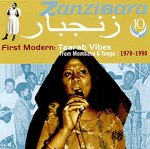 Various Artists
Various Artists
First Modern: Taarab Vibes from Mombasa & Tanga, 1970-1990
Buda Musique (dit. MVD)
860354
The tenth volume in Buda Musique’s justly celebrated Zanzibara series brings together examples of taarab, a popular music genre found extensively along the East African coast since its emergence in the 1920s. The style blends Swahili songs with Arabian-derived melodies (and occasionally Latin rhythmic patterns, interestingly enough), and in the 1970s its practitioners began to move away from traditional stringed-instrument accompaniment to amplified organs, clarinet, and other instruments. The sound was centered in Mombasa until the 1990s, when it was eclipsed by the new sounds (drum machines and big sound systems) coming from Dar-es Salaam. First Modern documents this progression with not only an exciting selection of tracks, but also extensive documentation, lyrics, and photos. For all libraries.
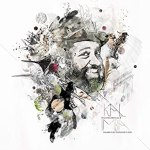 C Jones Meets Ale X
C Jones Meets Ale X
Kalimba Is My Telephone in Dub
Echo Beach
EB145
A three-way collaboration between the late Courtney Jones (who tragically died before the recording could be finished), Lore Grutsching, and Dubblestandart drummer Ali Tersch, Kalimba Is My Telephone in Dub is a strange and wonderful hybrid of steel pan music, thumb piano, and deep dub reggae. Tuned steel pans were invented in Trinidad, while the thumb piano (also known as a kalimba or an mbira) has been played in southern Africa for thousands of years. Lore Grutsching contributes flute to the mix, and Tersch pulls everything together in a rhythmic context that veers from instrumental hip hop to reggae to more abstract bass music structures. The whole album bounces and echoes and rumbles delightfully, with instruments and vocals shifting in and out of the mix in a dubwise style. Highly recommended.